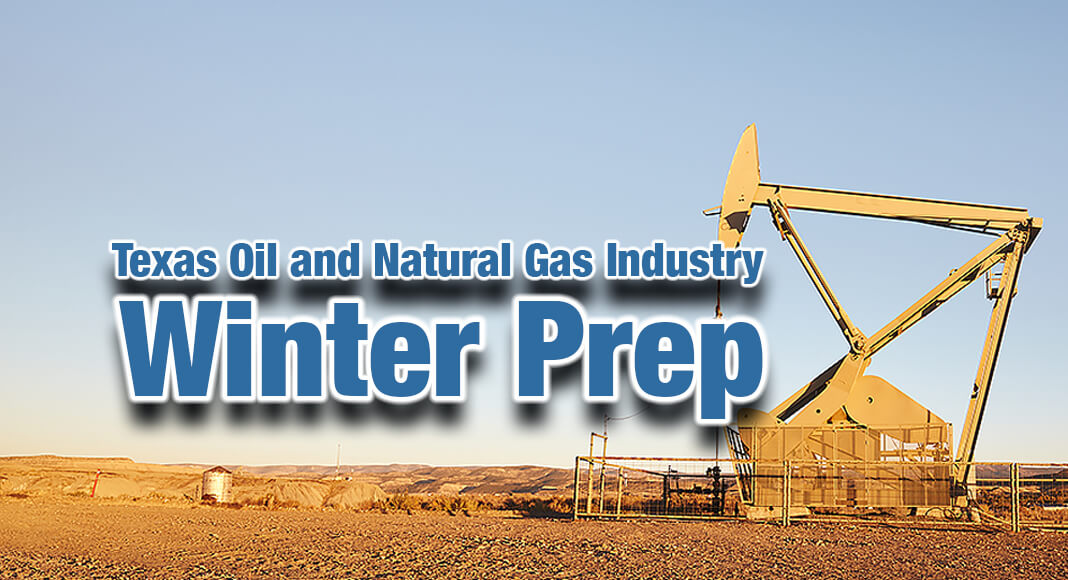
Texas Border Business
AUSTIN, Texas – Each winter, as the weather grows colder across Texas, all sectors of the Texas oil and natural gas industry take steps to prepare for weather events in order to ensure the production and transportation of oil and natural gas can continue even in the most extreme conditions.
Oil and natural gas operators begin preparing for cold weather months in advance and have extensive resources in place to monitor and prepare for inclement weather on an ongoing basis and utilize best practices and operational plans in order to maximize product flow. Onsite, seasonal weatherization techniques include methanol injection, temperature activated pumps, steamer units, equipment shelters, and insulated critical lines and valves.
Additional and offsite measures also prepare operators to better respond during inclement weather to ensure assets and personnel are safe and able to respond to critical needs.
| Examples of additional measures include: |
| Secure shelter/housing and pre-positioning personnel to be closer to and access assets |
| Adjusting employee schedules to ensure planning and preparations are in place |
| Having extra methanol and other supplies on trucks |
| Preparing and draining tanks to increase on-site storage and provide a temporary buffer for necessary 3rd party movement of product |
| Pre-inspection of assets prior to weather event |
| “Line-packing” to maximize product and pressurization in pipelines |
| Communication with 3rd party vendors to prepare for inclement weather contingencies |
| Identification of the most critical assets to help maintain power from electric utilities and keep production online |
Further, actions taken by the 87th Texas Legislature and the Railroad Commission of Texas (RRC) to establish critical load designation for the most critical natural gas assets and related systems is a new, post-Winter Storm Uri change. Starting on December 1, 2022, operators with facilities that are required to weatherize must share their emergency preparedness plans with the RRC, including considerations for how each operator will protect their employees, the environment and their equipment when implementing their plans. Requirements extend to external support operations such as water disposal wells, a necessary function to continue oil and natural gas production.
Even with these winterization techniques in place, production fluctuations are expected during extreme weather conditions. Variation in daily natural gas production occurs with sudden temperature changes because these are field operations, not controlled factory settings. These production challenges are not unique to Texas but occur in even much colder climates confirming some disruptions are unavoidable.
According to the RRC, even on mild weather days, daily natural gas production can fluctuate for a variety of reasons. Prudent users of natural gas domestically and globally should consider these factors when establishing agreements for product and plan appropriately which often includes provisions to contract for firm storage, supply and transportation to meet their needs during possible production decline periods.
Texas is more fortunate than most states due to our vast natural gas storage infrastructure funded by the private sector. During significant weather events and expected production fluctuations, daily production combined with natural gas storage provides ample access to product for power generation and local distribution companies that have contracted for these services. Over the past year, Texas’ natural gas marketed production has averaged over 31 billion cubic feet per day (Bcf/d), and natural gas used for electricity generation has remained around 5 Bcf/d. Texas has 860 Bcf of underground natural gas storage capacity, enough to power 5 Bcf/d of power generation for approximately 164 days or all of Texas’ average natural gas consumption for 64 days.
Power generators with firm contracts for supply, storage, and transmission for the volumes they need during extreme weather prove more reliable and resilient. These three items are paramount for generators to ensure costs efficiencies and readily available fuel.
“Demand for affordable abundant energy both here at home and abroad is only expected to grow, and a reliable electricity grid is essential to the oil and natural gas industry,” said Todd Staples, president of the Texas Oil & Gas Association. “Texas produces more than enough natural gas every day to meet our needs here at home, but this industry cannot operate without electricity. The Texas oil and natural gas industry is doing its part to ensure that no matter the weather, we are winter ready, and we urge all Texans and Texas industries to be prepared as well.”
For more information on what the oil and natural gas industry in Texas does and is doing to prepare for winter weather, visit txoga.org/winterready.
















